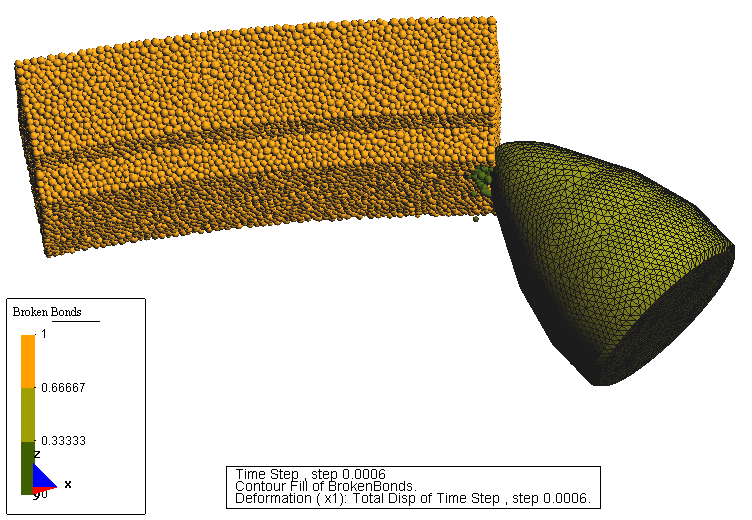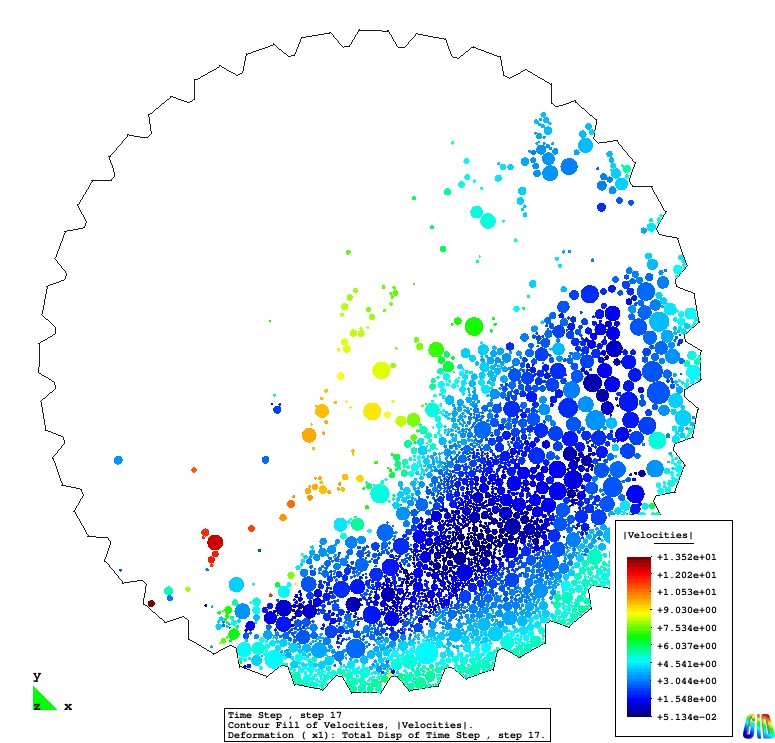| Home | What's GiD | Download | Purchase | GiD Plus | Support | News/Events |
Particle Based Methods
The discrete element method (DEM), also called distinct element method, based on spherical and cylindrical particles, it is widely recognized as a suitable tool to model geomaterials, advantages of this method are clearly seen in modelling problems characterized with strong discontinuities like rock fracturing during excavation. The discrete element model assumes that material can be represented by an assembly of rigid particles interacting among themselves. The overall behaviour of the system is determined by the cohesive/frictional contact laws. The contact law can be seen as the formulation of the material model on the microscopic level. Cohesive bonds can be broken, which allows us to simulate fracture of material and its propagation.
GiD support completely these kind of methods with a circle and sphere mesh generator, as well as specific visualization features totally suited to the requirements of them, which imply the managment of a large number of particles.
Rock Cutting
Numerical simulation of rock cutting test using DEM. The simulation is done using DEMPACK solver.

Excavation Process
Thermal coupling analysis simulation in a excavation process. Simulation done using DEMPACK solver.
Wear Analysis
Wear analysis on pieces involved in excavation process. Simulation done using DEMPACK solver.
TBM Disc Cutters Analysis
Linear cutting test with TBM disc cutters, using adaptive DEM/FEM coupling. The simulation is done using DEMPACK solver.
Impact Simulations
Projectile impact analysis using discrete element method. Simulation done with DEMPACK solver.
SAG Mill
Simulation of a SAG Mill for rock process in mining, using DEMPACK solver.


